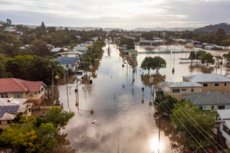New publications
Floods lead to an increase in leptospirosis cases
Last reviewed: 02.07.2025

All iLive content is medically reviewed or fact checked to ensure as much factual accuracy as possible.
We have strict sourcing guidelines and only link to reputable media sites, academic research institutions and, whenever possible, medically peer reviewed studies. Note that the numbers in parentheses ([1], [2], etc.) are clickable links to these studies.
If you feel that any of our content is inaccurate, out-of-date, or otherwise questionable, please select it and press Ctrl + Enter.

A recent study published by ITC faculty scientists in the International Journal of Health Geographics found that floods lead to an increase in cases of leptospirosis.
The first author, John Ifejube, is a recent graduate of the Spatial Engineering Masters program. This publication is a direct result of his Masters thesis in GeoHealth.
Flooding is a climate-related disaster that affects not only the environment but also human well-being. Leptospirosis is a blood infection caused by the bacterium Leptospira. People become infected through contact with contaminated water or urine.
Infected people may develop headaches, muscle pain and fever, but severe forms can lead to kidney failure. A growing number of studies have linked the spread of leptospirosis to floods, but until now this has not been thoroughly studied.
Master's Thesis For his master's thesis, Ifejube conducted a study on the relationship between leptospirosis incidence and repeated floods in Kerala, India. He found that floods lead to an increase in leptospirosis cases. His study shows that the duration of floods is the most important flood characteristic that can be used to predict the number of infections. According to his study, severe floods lead to more leptospirosis cases than moderate floods.
He compared cases of leptospirosis in three different years across time and space. Specifically, he compared the number of cases in 2018 and 2019, when there were severe and moderate floods, respectively, with the number of cases in 2017, when there were no floods.
For each flood year, he looked at reported cases three months before, during, and three months after the flood. To assess the severity of the floods, he identified the population exposed to each flood using high-resolution satellite imagery. Finally, he used spatial regression to examine the relationship between post-flood leptospirosis cases and flood magnitude.
